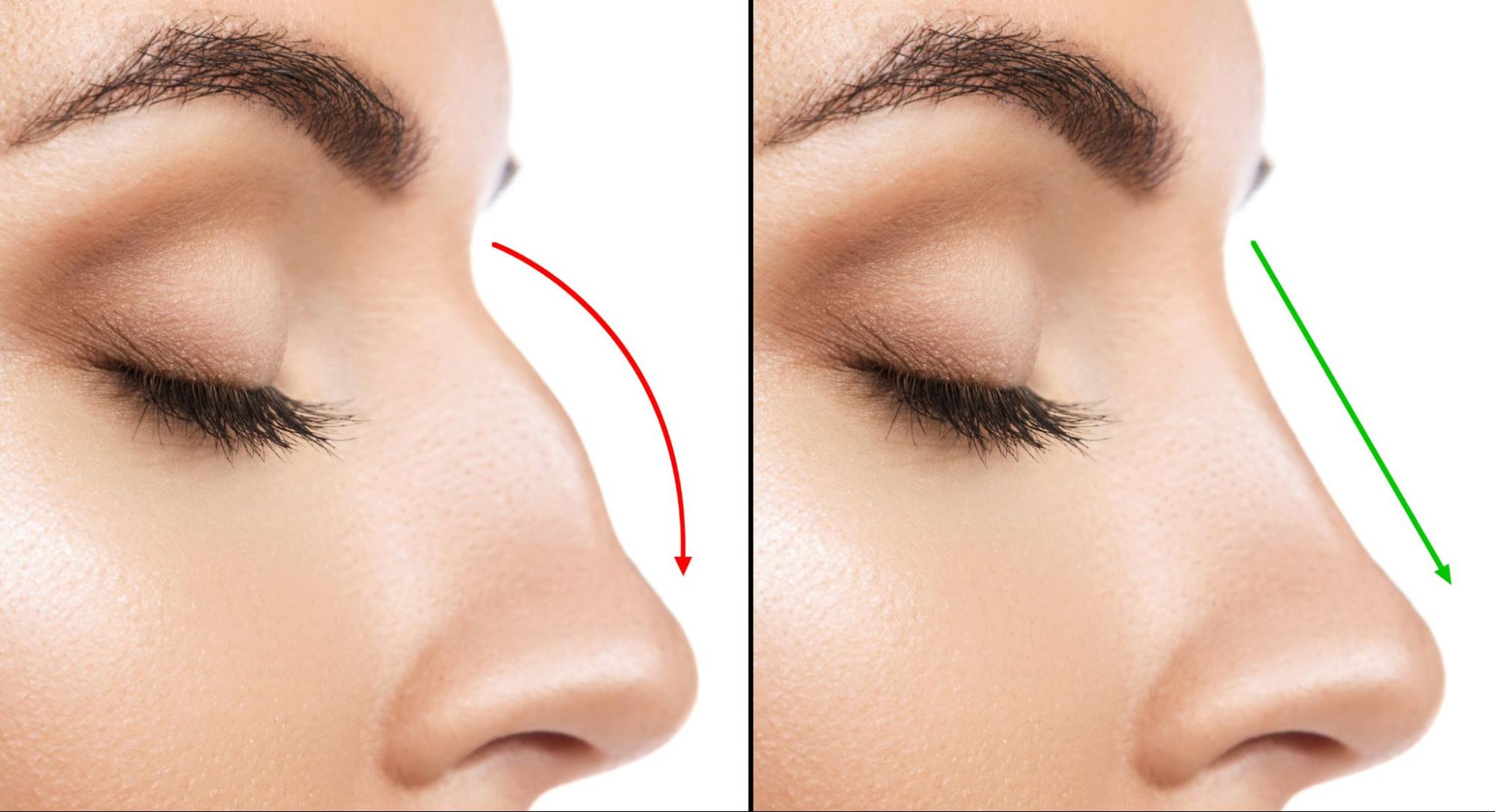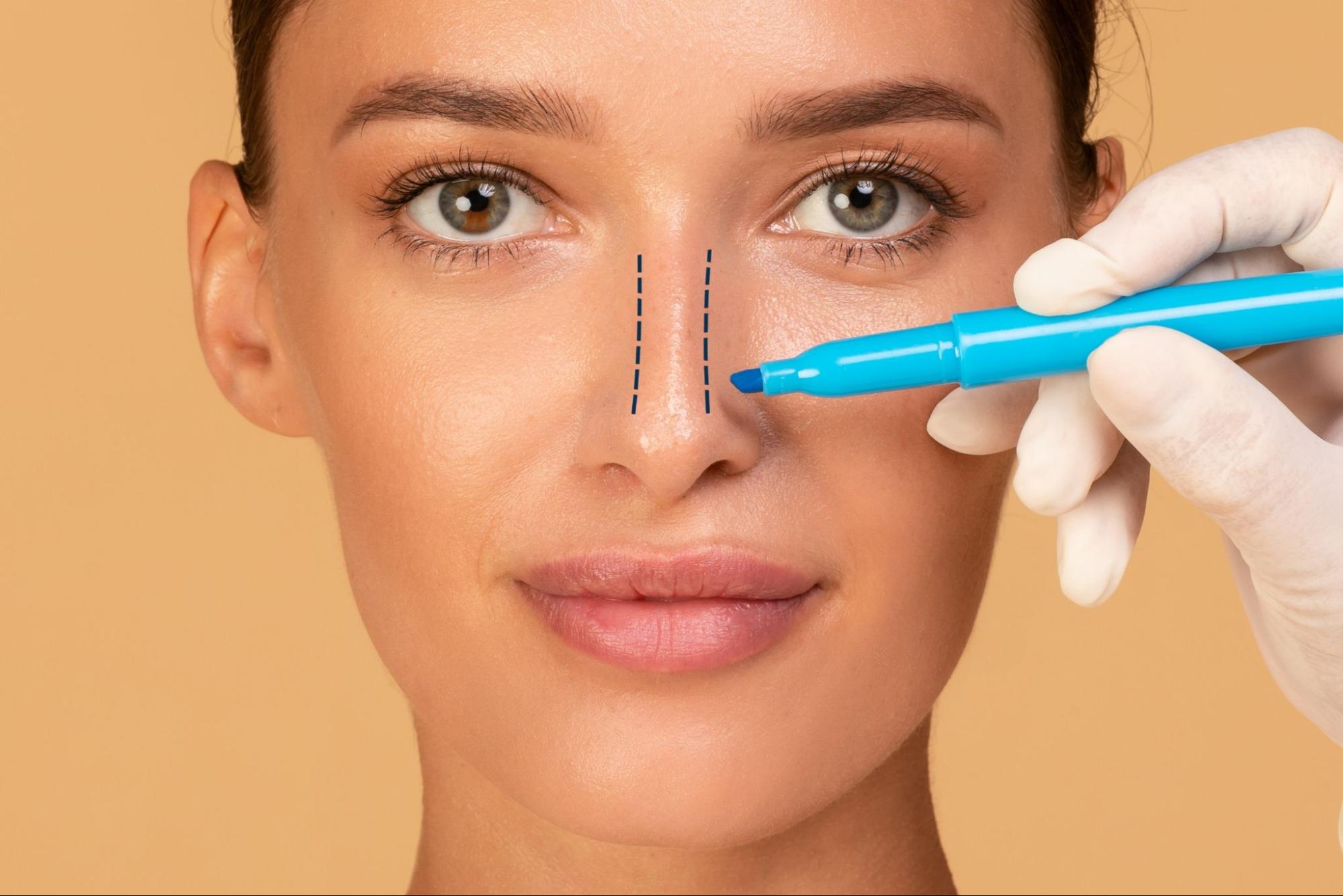Rhinoplasty
Rhinoplasty: What to Expect Before and After a Nose Job

by admin
22nd September 2023
6 minutes read
Rhinoplasty, commonly known as a nose job, is a transformative surgical procedure that can significantly improve both the appearance and functionality of the nose. The procedure has grown increasingly popular in recent years, with many individuals opting for rhinoplasty surgery to address aesthetic concerns, congenital defects, or breathing difficulties. This comprehensive guide will delve into what you can expect before and after rhinoplasty, providing you a clear roadmap of the entire journey, from pre-operative preparations to post-operative recovery.
Understanding Rhinoplasty: The Basics
Rhinoplasty is a form of nose plastic surgery that modifies the structure of the nose to achieve the desired aesthetic or functional outcome. As the central feature of the face, the nose plays a crucial role in facial harmony. A well-performed nose job can enhance one’s overall facial appearance, boosting self-esteem and confidence.
There are two primary types of rhinoplasty – cosmetic and functional. Cosmetic rhinoplasty (or ‘nose reshaping’) is typically performed to change the nose’s size, shape, or angle, while functional rhinoplasty is performed to improve breathing difficulties often linked to structural problems like a deviated septum.
Whether it’s to refine the nose top, or a nose lift to address drooping tips, the best rhinoplasty surgeon will take a personalized approach, ensuring that the procedure is tailored to each patient’s individual needs and aesthetic goals.
Preparing for Rhinoplasty: What to Expect
The first step in the rhinoplasty process is a consultation with a plastic surgeon. During this consultation, your surgeon will evaluate your health, discuss your expectations and motivations for surgery, and explain the available surgical techniques. They’ll take photographs of your nose from various angles for use in planning and assessing the outcome of the surgery. This is the ideal time to ask any questions or voice any concerns about the surgery.
Following this, a date for the nose operation will be scheduled. Your surgeon may request some tests, like blood tests or an ECG, to ensure you’re fit for surgery. They may also ask you to stop taking certain medications or supplements, especially those that can increase bleeding, such as aspirin, ibuprofen, or certain vitamins.
The Rhinoplasty Surgery: What Happens?
Rhinoplasty surgery is typically an outpatient procedure, meaning you won’t need to stay overnight in the hospital. It can be performed under local or general anesthesia, depending on the complexity of the procedure and your surgeon’s recommendation. The surgery itself can take anywhere from one to three hours.
There are two main surgical techniques used for rhinoplasty – open and closed. In an open rhinoplasty, an incision is made across the narrow strip of tissue that separates the nostrils, providing the surgeon with a better view of the underlying nasal structure. In a closed rhinoplasty, all incisions are hidden inside the nose, resulting in no visible scarring. However, it offers a more limited view of the nasal structures.
During the surgery, your surgeon will reshape the bone, cartilage, and soft tissues of your nose to achieve the desired changes. If additional cartilage is needed, it may be harvested from other parts of your body, such as the ear or rib.

After the Surgery: Recovery and Results
After the nose operation, you’ll likely wake up with a nasal splint to support the newly shaped nose. There may also be nasal packs or soft plastic splints placed in your nostrils to stabilize the septum.
In the first few days following the nose job, you might experience swelling, bruising, and minor discomfort. It’s crucial to follow your surgeon’s post-operative instructions closely to facilitate the healing process. This may include avoiding strenuous activities, keeping your head elevated, and avoiding pressure on your nose.
Gradually, the swelling and bruising will subside. It’s important to remember that the final result of your nose job won’t be apparent immediately. The nose continues to refine and take on its new shape for up to a year after the surgery. Rhinoplasty before and after photos can be a useful reference to see the changes over time.
In the realm of non-surgical options, nose fillers have also gained popularity for their ability to temporarily change the nose’s shape. A nose filler before and after comparison can show immediate results, but remember, these are temporary and not comparable to the long-lasting changes that surgical rhinoplasty can provide.
Final Thoughts
A rhinoplasty procedure offers transformative results that can positively impact your appearance and quality of life. However, it’s a significant decision that requires a lot of thought and careful consideration. Being well-informed about the process, having realistic expectations, and selecting the best rhinoplasty surgeon can significantly influence your overall experience and satisfaction with the outcome.
It’s essential to remember that every nose job recovery journey is unique, and patience is paramount. The final, refined result of your new nose may take time to fully reveal itself, but with anticipation and a trusted surgeon by your side, you can navigate the journey towards achieving your best nose with confidence and assurance.
How Can Medfin Help?
Medfin is a daycare surgery expert providing access to the latest surgical procedures and top doctors in your city at affordable prices. Medfin provides you access to top doctors and surgeons with 10+ years of experience . With Medfin, you can leave your hassles behind and focus on your health. From instant consultations to paperwork assistance, we have got you covered with everything. So why wait? Call us today!
FAQ’s
Research potential surgeons’ credentials and experience, review patient testimonials, assess before-and-after photos, and attend consultations to find a surgeon who makes you feel comfortable and understood. Consider their specific experience in the type of rhinoplasty procedure you require.
Non-surgical rhinoplasty involves using injectable fillers to alter the shape of the nose temporarily. This option provides immediate results but is not as lasting or transformative as surgical rhinoplasty.
Yes, the changes made to the nose structure during rhinoplasty are permanent, although the nose can still alter slightly due to natural aging.
A typical rhinoplasty procedure can take anywhere from one to three hours, depending on the complexity of the changes being made.
Yes, functional rhinoplasty can correct a deviated septum, improving breathing issues associated with the condition.
CATEGORIES
- ACL Reconstruction
- Anal Fissures
- Anal Fistula
- Appendicitis
- ASK A DOCTOR
- Benign Prostatic Hyperplasia
- Breast Lump Excision
- Cataract
- Circumcision
- Conditions & Diseases
- Cosmetology
- Covid-19
- Cure
- Endocrinology
- ENGLISH VIDEOS
- Eye Care
- Gallstones
- General Surgeries
- Government Schemes
- Gynaecology
- Gynecomastia
- Gynecomastia
- Health
- Health Insurance
- Hernia
- hindi
- Hip Arthoscopy
- Hip Replacement
- Hip Replacement Surgery
- Hydrocele
- Kannada
- Kidney Stones
- Knee Arthroscopic
- Laparoscopic
- LASER
- Latest Treatments
- Lifestyle
- Liposuction
- Medfin Stories
- Medicine
- Nephrology
- Ophthalmology
- Orthopaedic
- Paraphimosis
- Patient Testimonials
- PCL Reconstruction
- Phimosis
- Piles (Hemorrhoids)
- Pilonidal Sinus
- Proctology
- Prostate Artery Embolization
- Rhinoplasty
- Second Opinion
- Total Knee Replacement
- Uncategorised
- Urology
- uterine artery embolization
- Uterine Fibroids
- Varicocele
- Varicose Veins
- Vascular
- VIDEOS






